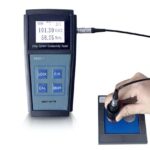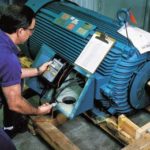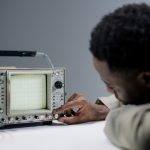In electrical engineering, proficiency in partial discharge (PD) testing is essential. This technique is vital for assessing the condition and safety of electrical systems. Your skills in PD testing contribute significantly to maintaining system reliability and preventing failures.
Becoming an expert in PD testing involves more than just understanding its principles. It also requires a practical knowledge of various diagnostic methods. This guide offers a pathway to develop your expertise, from grasping fundamental concepts to mastering advanced testing techniques.
Understanding Partial Discharge
Partial discharge occurs when electrical discharges partially bridge the insulation gap in electrical equipment, hinting at insulation flaws. It’s common in high-voltage systems like transformers and cables and can result from manufacturing defects, environmental factors, or wear and tear. Early detection of PD is critical as it can lead to insulation failure and system breakdowns.
Its impact is significant, potentially eroding insulation and causing complete equipment failure. This can damage the equipment and pose safety risks. Regular PD testing is crucial, even in well-maintained systems, to ensure operational efficiency and safety. Effective management of PD is vital to maintaining the reliability of electrical infrastructure.
Fundamentals Of Partial Discharge Testing
PD testing is a method used to evaluate the condition of electrical insulation in high-voltage equipment. It involves measuring the electrical pulses that occur when a small portion of the insulation becomes electrically stressed beyond its capacity. These measurements help in identifying insulation defects before they lead to complete system failures.
Two primary techniques are employed for partial discharge testing:
- Electrical Methods: Involving the use of coupling capacitors and high-frequency current transformers, this approach detects PD by measuring changes in electrical parameters.
- Acoustic/Ultrasonic Methods: Particularly useful in environments where electrical noise might interfere with standard measurements, these techniques detect the sound or ultrasonic waves produced by PD.
PD testing involves connecting the test equipment to the system, calibrating the instruments, recording the PD activity, and analyzing these recordings to pinpoint the location and severity of insulation defects.
Advanced Techniques And Analysis
Advancements in PD testing have led to more sophisticated techniques and analytical methods. These advancements enhance the accuracy and depth of diagnostics, which are crucial for complex electrical systems:
- Ultra High Frequency (UHF) Techniques: These methods detect PD by capturing high-frequency signals, which are effective in identifying discharges in gas-insulated switchgear and transformers. Known for its sensitivity and ability to pinpoint discharge sources with precision, this technique is invaluable for detailed assessments.
- High Frequency Current Transformer (HFCT) Methods: This technique captures high-frequency current signals induced by PD in cables and accessories. It excels in identifying PD activity in complex cable systems, offering a comprehensive view of the system’s health.
- Advanced Data Analysis: Modern PD testing involves sophisticated data analysis, using algorithms and software to interpret PD data. This analysis helps identify patterns and trends, leading to more accurate diagnostics and predictive maintenance strategies.
These techniques represent a significant leap in PD testing capabilities, providing a more accurate assessment of electrical system health. As technologies evolve, maintaining proficiency in these methods is essential for professionals aiming to excel in electrical engineering.
Practical Skills And Experience
Gaining practical skills and hands-on experience is indispensable for becoming an expert in partial discharge (PD) testing. Here’s how:
- Hands-on Training: Participate in training sessions to work with PD equipment, simulate common PD scenarios, and develop problem-solving skills. This hands-on approach is indispensable for understanding the practical aspects of PD testing.
- Field Experience: Gain real-world experience by working on a variety of projects. This exposure to different PD situations enhances your understanding and expertise, allowing you to apply theoretical knowledge in practical settings.
- Mentorship And Collaboration: Learn from seasoned professionals through mentorship. Their insights into advanced techniques and strategies provide invaluable guidance and accelerate your learning curve.
- Continuous Practice: Regular practice is crucial for skill refinement. Engaging consistently in PD testing sharpens your abilities and keeps you updated with the latest practices.
These steps are important in mastering PD testing, as they blend technical knowledge with practical application. Furthermore, they help build your confidence in handling real-world challenges.
Continuous Learning And Professional Development
The field of PD testing constantly presents new challenges and innovations. Thus, it’s essential to engage in continuous learning to enhance your expertise. This involves staying current with the latest advancements through technical journals, webinars, and specialized courses. Such active engagement updates your knowledge and deepens your understanding of emerging trends and techniques in PD testing.
Pursuing professional certifications in PD testing is equally important, as they validate your expertise. Coupled with participation in industry seminars, they sharpen your technical skills and analytical thinking. This commitment to learning and development enhances your credentials and opens up avenues for career advancement, positioning you as a knowledgeable and skilled professional in the field.
Final Thoughts
Mastering partial discharge testing is a process that combines expanding your theoretical knowledge with hands-on experience. As you continue to learn and grow professionally, your skills in PD testing become increasingly valuable, setting the stage for a rewarding career in electrical engineering.
More than a personal achievement, your commitment to this field is a vital contribution to ensuring the safety and efficiency of our electrical infrastructure.






